This is something I do when I make planes, and when I fix planes for other people, and when I get older ones....same thing every time after geometric work is done.
Should be ashamed of letting the shooter dry up and get moldy, but I"m not conscientious sometimes.
Dried up dirty shooting plane:
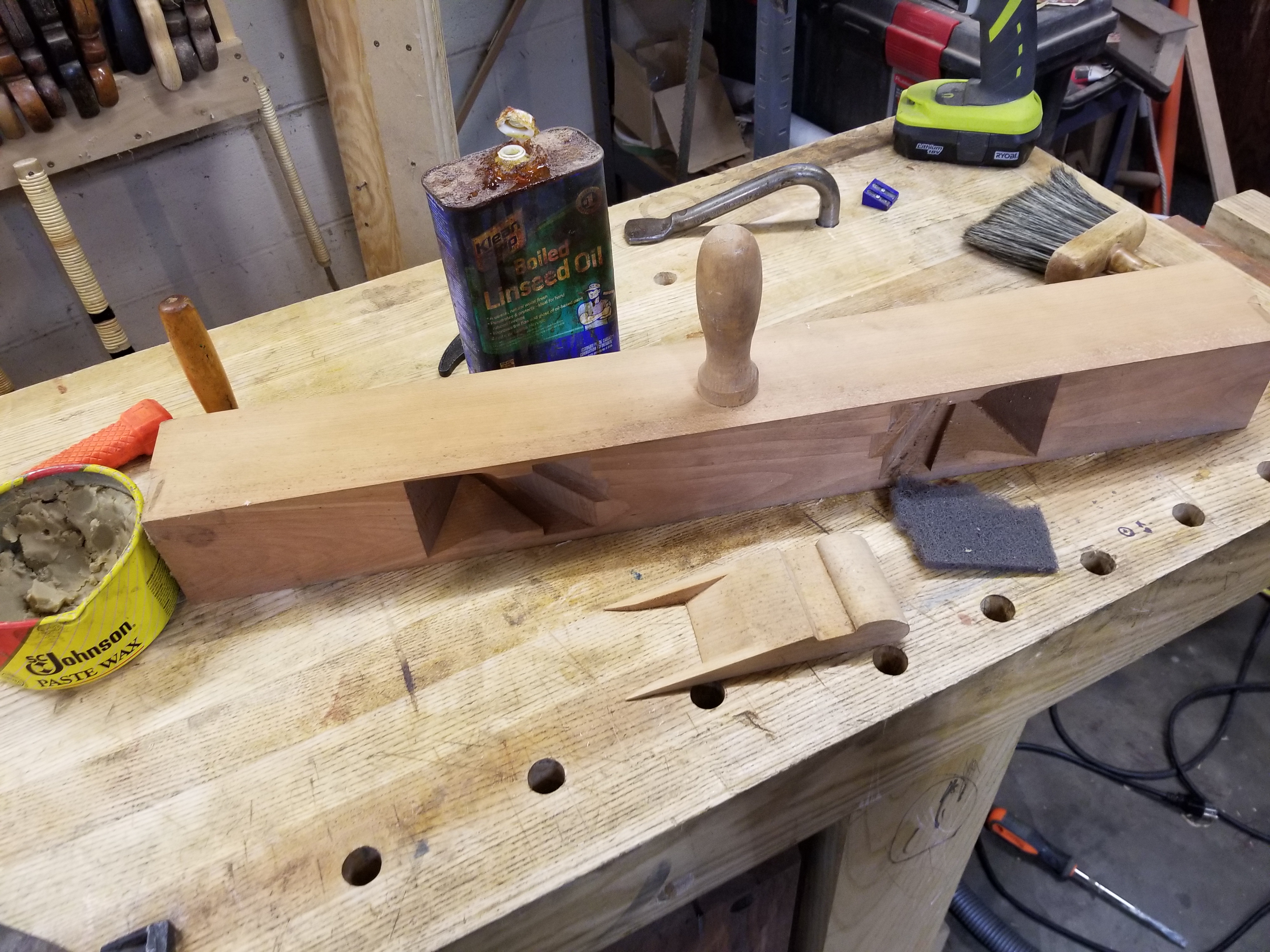
I like linseed oil, furniture wax and a gray scotchbrite:
slather the oil on, let it sit for a little bit, and then scotchbrite to lift off the easy dirt. I leave the rest (on old planes, too - never like to make old planes look like fresh wood). If something is on a plane with conviction, I leave it alone. Endgrain, like the handle, usually doesn't give up its filth completely.
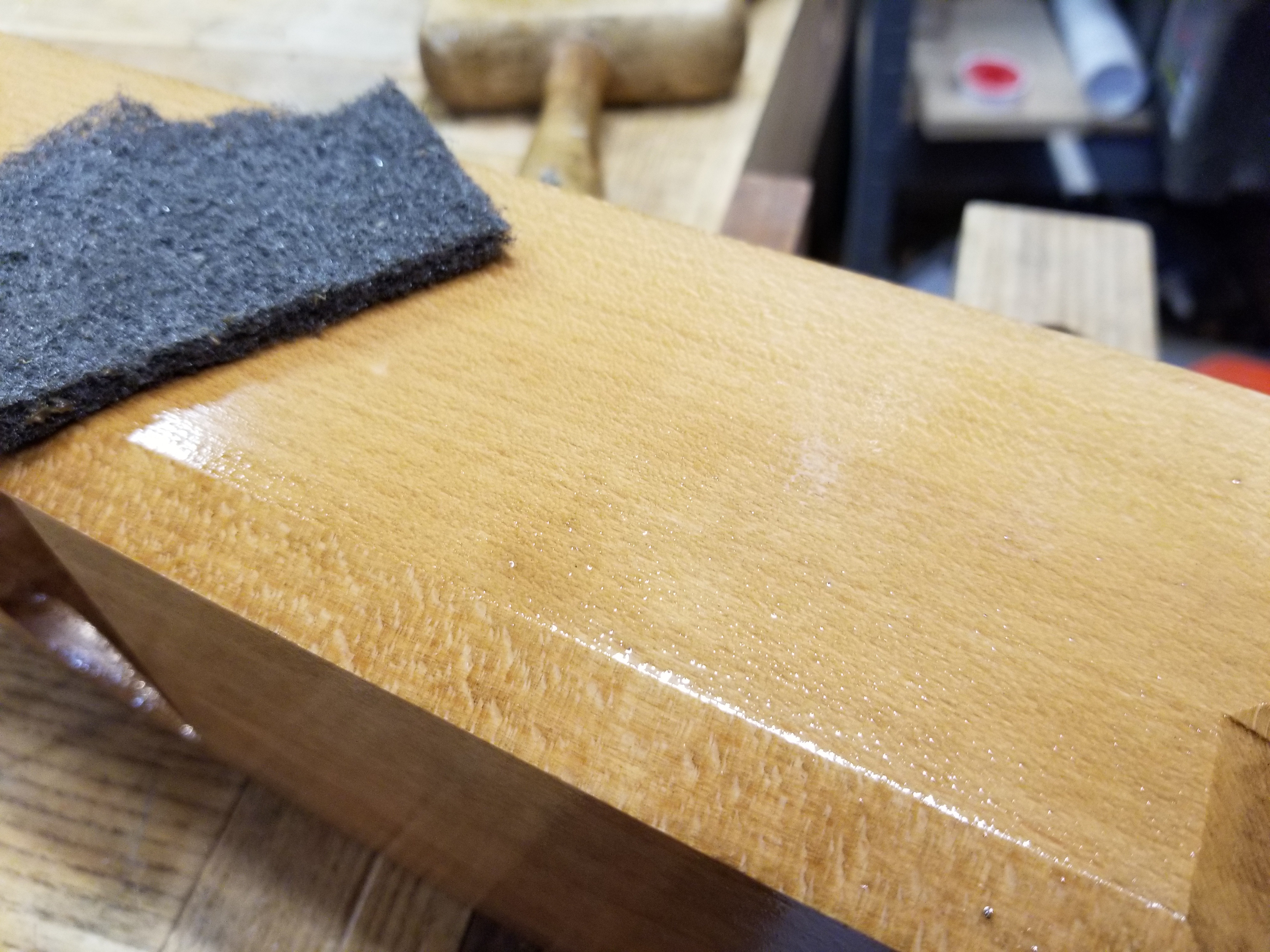
Oil everything everywhere (I missed the slot on one of the beds...next time). You can wipe it off then or add wax to the slurry. Without wax, the linseed oil will breed more mold. The wax does two things - stop the mold, and it also makes it so that you can use the plane practically right away after you're done with this process. Same thing with clumps of wax, work it around with the scotchbrite - everywhere except the bed. Not bad policy to leave it off of the back of the abutments and the top of the wedge fingers, too. But you'll live if you keep it off of the bed only.
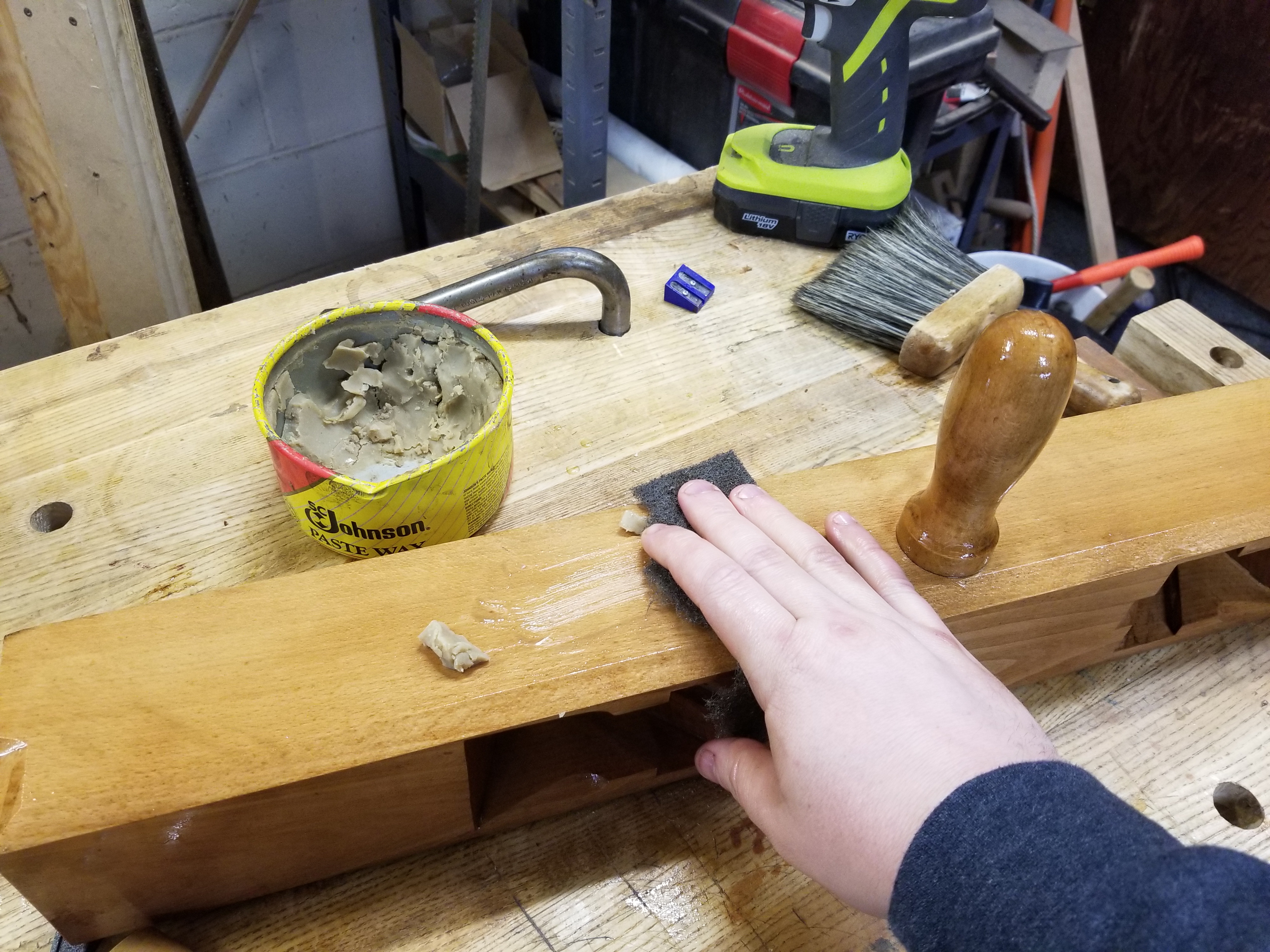
After it sits for a few minutes, wipe off the excess. If it's too oily, just rewax quickly and then wipe off again.
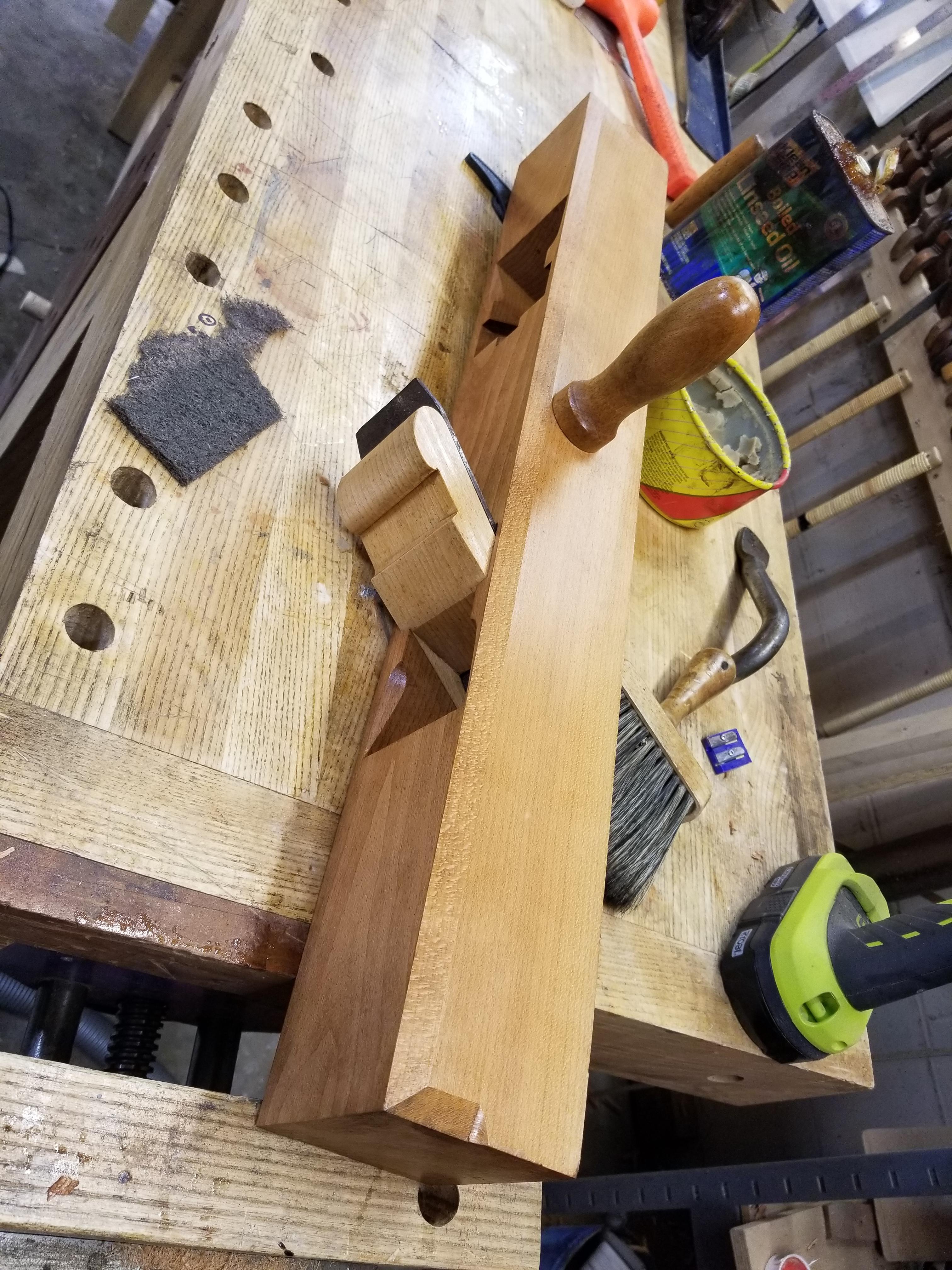
Care is necessary with the linseed oil rags - that goes without saying, but someone will always tell me I'm going to burn my house down. I posted these through IMGUR and the first post that I received was that it's not appropriate to dispose of linseed oil rags without having a "heat sink" to place them on. Sometimes i let them cure outside, sometimes on the shop floor (cool concrete). I've never noticed them to be anything other than cool. Do whatever is safe. The idea of a heat sink for a rag is new to me. I guess the concrete, air and metal surfaces are my heat sink.
I've literally never used the center of my grinder for anything, so this cloth is unlikely to be moved before it's stiff and cured.
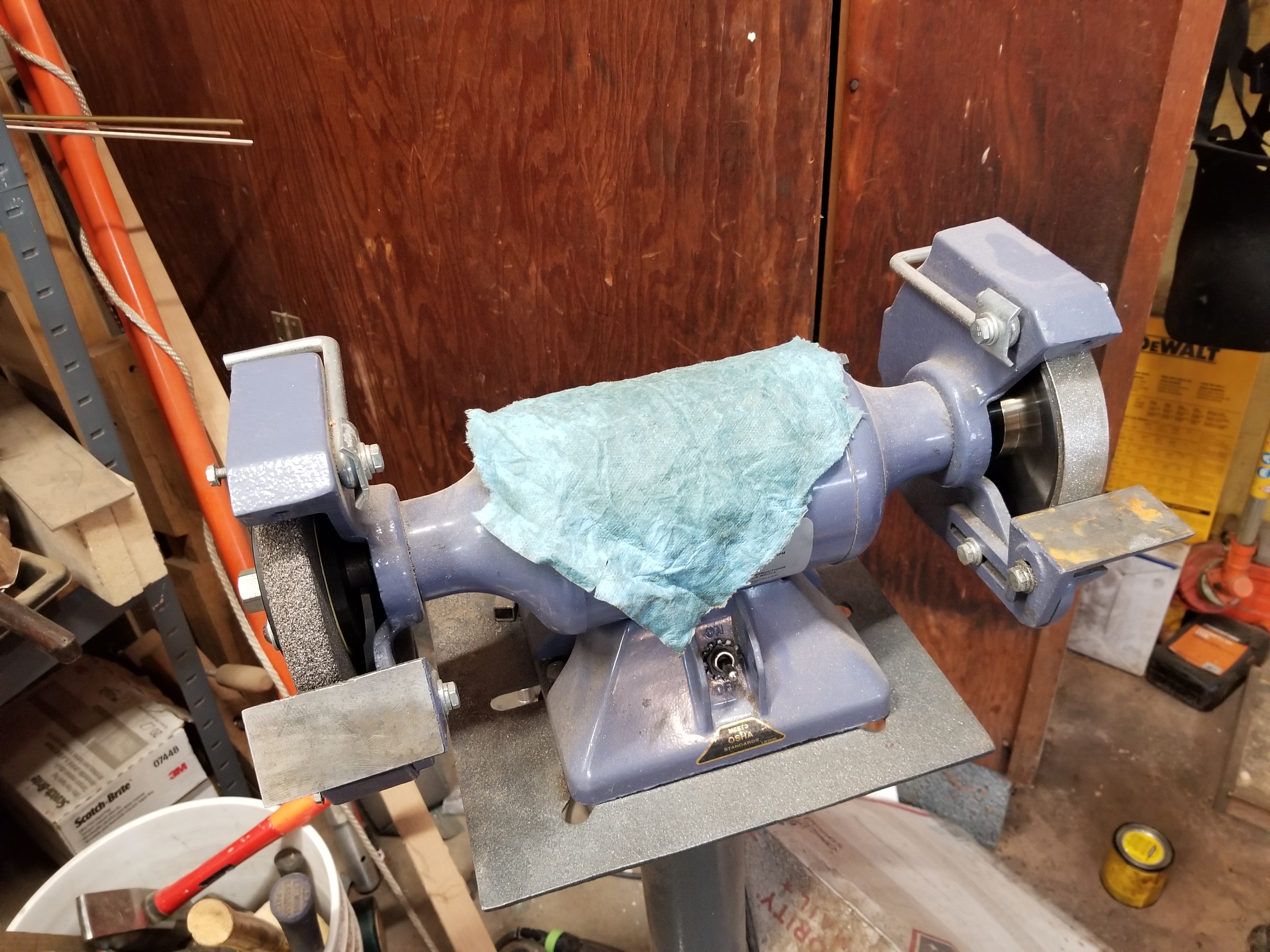
If using the plane shortly after this, remove the wedge and iron when you're done to let the whole thing finish drying. If you don't, some of the oil and wax will dry to the metal and everything may get mildly stuck.
It's better policy for long-term storage (on an infrequently used plane) to store a wedge and iron loose, anyway, for several reasons.
Should be ashamed of letting the shooter dry up and get moldy, but I"m not conscientious sometimes.
Dried up dirty shooting plane:

I like linseed oil, furniture wax and a gray scotchbrite:
slather the oil on, let it sit for a little bit, and then scotchbrite to lift off the easy dirt. I leave the rest (on old planes, too - never like to make old planes look like fresh wood). If something is on a plane with conviction, I leave it alone. Endgrain, like the handle, usually doesn't give up its filth completely.

Oil everything everywhere (I missed the slot on one of the beds...next time). You can wipe it off then or add wax to the slurry. Without wax, the linseed oil will breed more mold. The wax does two things - stop the mold, and it also makes it so that you can use the plane practically right away after you're done with this process. Same thing with clumps of wax, work it around with the scotchbrite - everywhere except the bed. Not bad policy to leave it off of the back of the abutments and the top of the wedge fingers, too. But you'll live if you keep it off of the bed only.

After it sits for a few minutes, wipe off the excess. If it's too oily, just rewax quickly and then wipe off again.

Care is necessary with the linseed oil rags - that goes without saying, but someone will always tell me I'm going to burn my house down. I posted these through IMGUR and the first post that I received was that it's not appropriate to dispose of linseed oil rags without having a "heat sink" to place them on. Sometimes i let them cure outside, sometimes on the shop floor (cool concrete). I've never noticed them to be anything other than cool. Do whatever is safe. The idea of a heat sink for a rag is new to me. I guess the concrete, air and metal surfaces are my heat sink.
I've literally never used the center of my grinder for anything, so this cloth is unlikely to be moved before it's stiff and cured.

If using the plane shortly after this, remove the wedge and iron when you're done to let the whole thing finish drying. If you don't, some of the oil and wax will dry to the metal and everything may get mildly stuck.
It's better policy for long-term storage (on an infrequently used plane) to store a wedge and iron loose, anyway, for several reasons.


